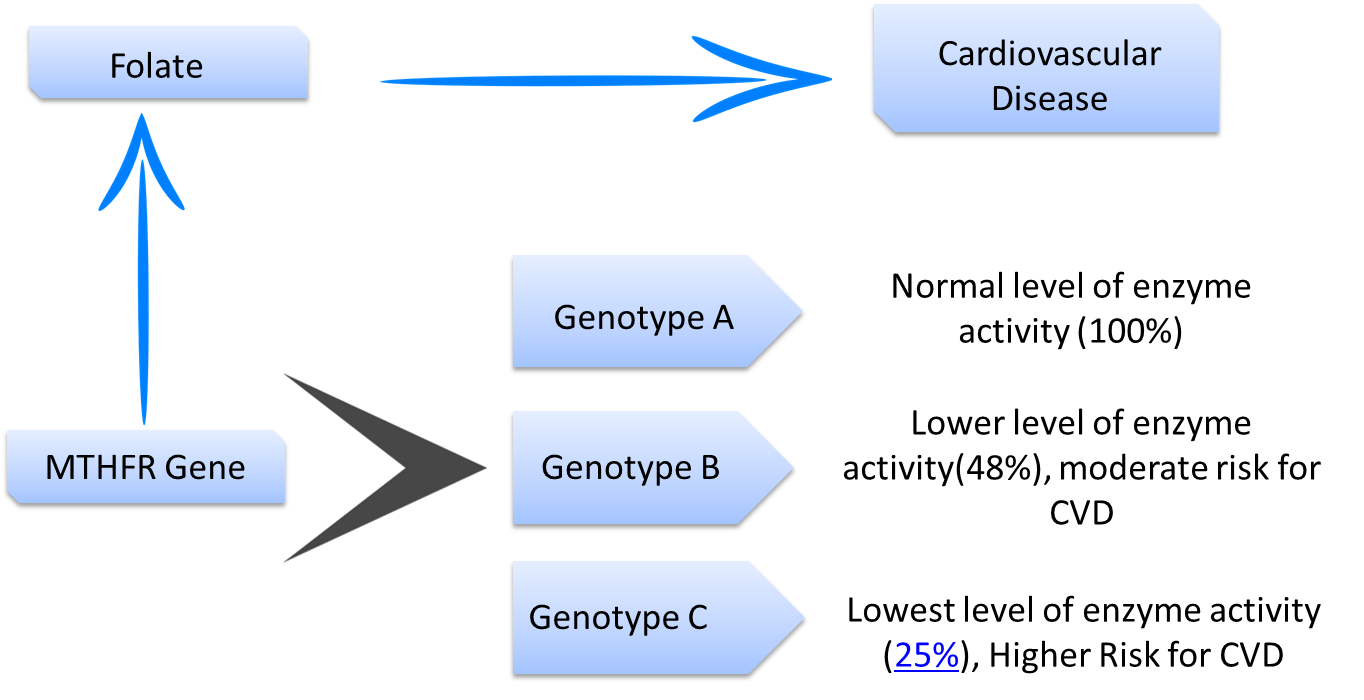Cardiovascular disease is a group of diseases that involve the heart and blood vessels. There are a number of risk factors associated with this condition, including genetic risk factors with several mutations in several genes being associated. One such important and the independent risk factor is Homocysteine.
Nearly 60% of the world’s heart disease occurs in India Indians are prone to premature coronary artery disease (CAD) with homocysteine found to be a significant independent risk factor for CAD in young patients. MTHFR gene polymorphism was found in 1/3rd of ischaemic stroke patients in India and was associated with a higher frequency of hyperhomocysteinemia compared with people without the polymorphism. Gene mutation implicated in homocysteine levels are significantly associated with CVD in Indians C677T MTHFR mutation was strongly associated with arterial stroke, with MTHFR allele evaluation aiding in reducing morbidity due to stroke. Multiple scientific studies have established high levels of homocysteine in the Indian population- as much as 80% according to one study. Poor maternal folate rate, indicated by plasma homocysteine levels which is a highly sensitive marker of folate levels, is associated with preeclampsia, stillbirth, preterm delivery, and spontaneous delivery. 60 to 90% of adolescents in India suffer from anemia, with folate deficiency being one of the major causative factors for nutritional anemia. 22 to 52% in India have folate deficiency in India. Conditions associated with folate deficiency, like neural tube defects with a prevalence of 1 to 5 per 1000 live births, are high in India.
Folate (vitamin B9) is responsible for converting the harmful homocysteine to its useful form, methionine. Methionine is important for many essential bodily functions such as the production of DNA and RNA, cell, and tissue growth. Though dietary intake of folate is generally inadequate in India, that is not the only reason for high homocysteine levels. Genes also play an important role.
MTHFR and Active Folate Level

Folate is present in an inactive form in the body and is converted to its active form by the enzyme Methyl Tetra hydro Folate Reductase (MTHFR). The active form of folate is necessary for the conversion of homocysteine to methionine. The gene MTHFR plays a role in the production of the MTHFR enzyme and any genetic variation in this gene could alter the level and activity of the enzyme in the body. It has been shown that the prevalence of MTHFR gene mutation is high in India, which when combined with low dietary folate intake can lead to very high levels of homocysteine and other associated conditions.
MTHFR Genotype Possibilities

Maintenance of adequate folate levels is extremely important during pregnancy, infancy, and adolescence. Lack of methionine can lead to improper DNA synthesis and disruption in gene regulation that could lead to birth defects like neural tube defects, which are associated with folate deficiency.

Asians show a high prevalence of 677C>T polymorphism in the MTHFR gene. People with genetic variants that are at high risk for folate insufficiency should supplement their diet with rich sources of folate. Fruits and vegetables are good sources of folate, however, in India, overcooking vegetables leads to loss of folate. Fortified cereals, grains, and cornmeal are sources of folic acid, which is a synthetic form of folate. The folate from the diet will compensate for the lowered levels due to gene polymorphism.
The type of MTHFR gene has been shown to influence the Active Folate levels in blood. Want to know what type of MTHFR gene you have? Try Xcode’s nutrigenetics test which can tell you what versions of the MTHFR gene are in your DNA. You can also learn about how your genes may influence other traits, including your risk for certain diseases. Write to us at hello@xcode.life to find out more.




